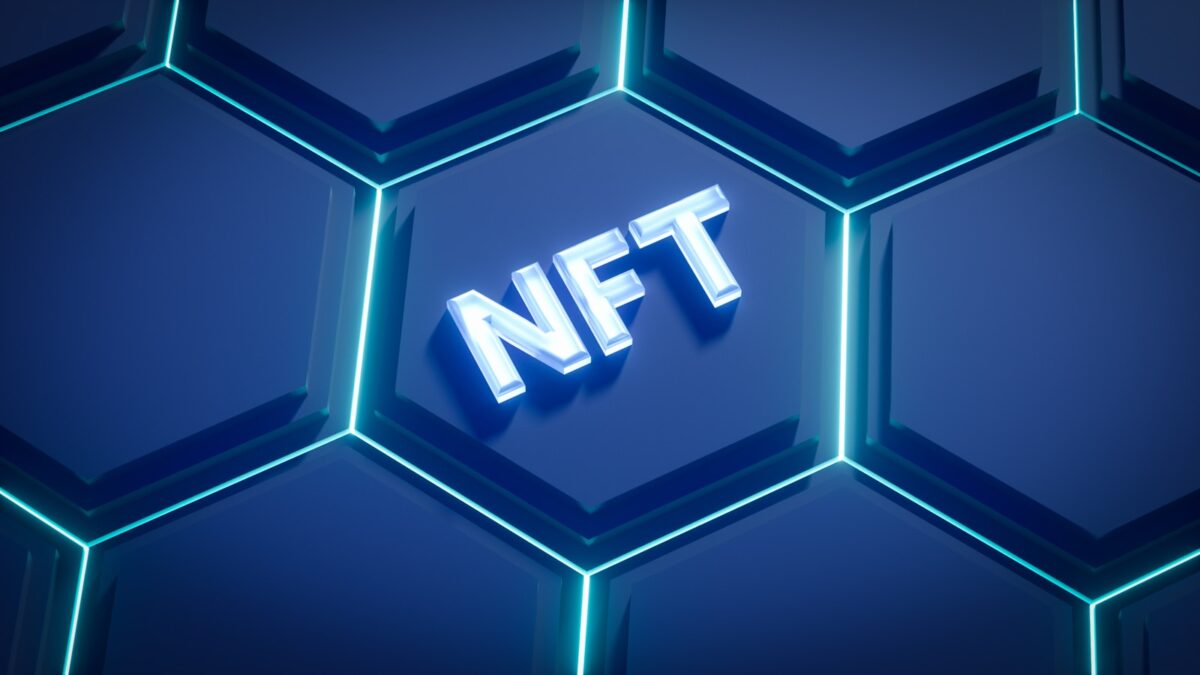
Forks in blockchain explained

The distinction between soft and hard upgrades lies in how the network’s consensus rules evolve. A soft update maintains backward compatibility, allowing nodes that do not upgrade to remain part of the community without rejecting new blocks. Conversely, a hard change enforces new rules incompatible with previous versions, resulting in a permanent chain split if not all participants adopt the upgrade.
Community coordination is critical when implementing modifications to the underlying protocol. Without broad agreement, diverging interpretations of consensus rules can cause simultaneous chains to emerge, fragmenting the ecosystem. Careful design ensures that upgrades either extend existing validations softly or replace them decisively to prevent confusion.
Analyzing these mechanisms reveals practical methods for managing distributed ledger evolution. Soft transitions offer incremental improvements by layering new functionalities atop established frameworks, while hard shifts demand collective commitment to altered foundations. Experimental evaluation of both approaches clarifies their impacts on network stability and participant alignment.
Forks in Blockchain Technology: Understanding Network Splits and Protocol Upgrades
The occurrence of a chain split arises when the community disagrees on the set of operational rules, resulting in diverging ledgers. Such splits can be intentional upgrades to the underlying protocol or unintended consequences due to conflicting consensus mechanisms. Recognizing the distinction between these scenarios is vital for assessing network stability and security.
An intentional division, commonly called a hard upgrade, involves modifying consensus rules so that nodes running previous software versions become incompatible with the updated chain. This creates two separate block sequences, each maintained by different participant groups within the ecosystem. The decision to execute such an upgrade depends on broad community agreement and rigorous testing to minimize disruptions.
Technical Classification and Impact of Chain Divisions
Hard splits require all validators to adopt new consensus protocols simultaneously; otherwise, a permanent bifurcation ensues. A notable example is Ethereum’s transition during its Constantinople update, which necessitated widespread node synchronization to avoid fragmentation. Conversely, soft modifications allow backward compatibility but do not alter fundamental validation criteria.
The effects of network bifurcations extend beyond mere ledger duplication. They influence token economics, transaction finality, and security guarantees. For instance, Bitcoin Cash emerged from a disagreement over block size limits, illustrating how protocol parameters directly shape scalability and throughput. Such events emphasize the importance of coordinated governance within decentralized systems.
- Consensus divergence: Divergent validation rules create isolated ecosystems requiring independent trust assessments.
- Community alignment: Successful upgrades depend on consensus among miners, developers, and users.
- Security implications: Splits may expose vulnerabilities if one chain lacks sufficient computational power.
- Ecosystem fragmentation: Parallel chains can dilute network effects and liquidity.
The technical process behind these splits involves careful manipulation of protocol state machines encoded in node software. Developers propose changes through improvement proposals outlining parameter adjustments or feature additions. Subsequent activation occurs after predetermined thresholds signal majority support from mining or staking participants.
This procedural rigor facilitates controlled evolution while safeguarding against uncoordinated divergences that jeopardize system integrity. Observing case studies like Bitcoin’s Segregated Witness upgrade reveals how layered signaling mechanisms enable smoother transitions without immediate chain division risks. Continuous research into adaptive consensus algorithms remains essential for enhancing future network resilience amid evolving upgrade demands.
How Blockchain Forks Occur
A divergence in the ledger emerges when there is a change or disagreement regarding the rules that govern transaction validation and block creation. Such a split arises from modifications to the underlying protocol, which can be classified primarily into two categories: soft and hard. These alterations affect how nodes achieve consensus, potentially leading to multiple versions of the distributed ledger coexisting temporarily or permanently.
The community’s role is pivotal during these events, as consensus mechanisms depend on widespread agreement about protocol upgrades. When some participants adopt new rules while others retain legacy configurations, it results in a bifurcation of the network state. This phenomenon reflects not only technical divergences but also differing visions within the ecosystem regarding development priorities and governance.
The Mechanisms Behind Protocol Upgrades and Network Splits
Soft changes involve backward-compatible updates where upgraded nodes accept blocks created by older clients, thus maintaining coherence without forcing mandatory immediate adoption. These updates typically introduce improvements such as optimized algorithms or enhanced security parameters without invalidating previous rules. The network continues functioning on a single chain, provided a majority aligns with the upgrade.
Conversely, hard modifications impose non-backward-compatible adjustments, meaning nodes adhering strictly to old rules reject blocks generated under new protocols. This incompatibility initiates a permanent division, where two distinct ledgers operate independently post-upgrade. A notable example includes Ethereum’s transition during the DAO incident in 2016, where ideological differences led to separate chains: Ethereum (ETH) and Ethereum Classic (ETC).
The decision-making process triggering these changes often involves rigorous debate within developer communities and stakeholders. Proposals undergo extensive testing through testnets and simulations before activation thresholds are reached. Governance models vary across projects; some rely on miner signaling for consensus upgrades, while others use voting mechanisms among token holders or core developers.
This dynamic underscores the experimental nature of decentralized systems where protocol evolution embodies collective discovery. Observing splits offers insights into conflict resolution and adaptability in permissionless networks. Researchers can track metrics such as hash power distribution and node version statistics to anticipate potential divergences and assess their impact on network stability.
Differences between Soft and Hard Forks
Soft forks represent a backward-compatible modification to the existing rules of a decentralized ledger, allowing nodes that have not upgraded to continue participating in the consensus process without disruption. This type of protocol adjustment tightens or refines validation criteria, ensuring that blocks considered valid under new rules are also valid under previous ones. Consequently, the chain remains unified as all participants agree on a single history, even if some operate with older software versions. A notable example is Bitcoin’s Segregated Witness (SegWit) update, which implemented enhanced transaction formats while maintaining compatibility with legacy nodes.
In contrast, hard forks introduce non-backward-compatible changes that alter core protocol rules fundamentally enough to cause divergence in the ledger’s history. Nodes running outdated software reject blocks created under the new consensus parameters, resulting in a permanent split into two distinct chains. This division forces community members to choose which version to support or maintain parallel networks indefinitely. Ethereum’s transition from proof-of-work to proof-of-stake via the Merge did not involve a hard fork; however, Ethereum Classic emerged following Ethereum’s DAO hard fork–a clear instance where disagreement led to persistent chain separation.
The key technical distinction lies in consensus enforcement: soft forks rely on stricter rule implementation within existing constraints, preserving network cohesion by allowing old clients to accept new blocks. Hard forks discard previous restrictions entirely, requiring unanimous upgrade adoption for seamless operation. From an upgrade strategy perspective, soft forks minimize disruption by leveraging shared rule subsets and impose lower risks for network fragmentation. Conversely, hard forks demand coordinated community agreement and thorough testing due to their potential impact on security assumptions and economic incentives across different chain versions.
Assessing these mechanisms experimentally involves analyzing node behavior during activation phases and monitoring block acceptance patterns post-upgrade. For instance, evaluating hash power distribution after a hard fork can reveal whether one chain achieves dominance or both persist in parallel equilibrium. In soft fork scenarios, observing mempool consistency and orphan block rates offers insights into transitional dynamics under modified validation schemas. Such investigations deepen understanding of how protocol evolution influences overall ecosystem stability and participant alignment amid competing rule sets.
Impact of forks on transactions
The occurrence of hard and soft splits in a decentralized ledger directly influences transaction processing and finality. When a hard split occurs, the protocol undergoes an irreversible divergence, creating two separate ledgers with distinct consensus rules. This division can lead to duplicate transactions if both chains accept similar inputs before the community fully adapts to the new structure.
Soft upgrades maintain backward compatibility, allowing nodes to validate blocks under updated rules without splitting the chain. However, even such non-disruptive changes may introduce temporary delays or inconsistencies in transaction confirmation times as network participants gradually update their software versions.
Technical implications of chain divergence on transaction integrity
A hard split generates two independent environments where transactions confirmed on one chain are not recognized by the other. This disjunction challenges wallets and exchanges to accurately identify valid balances and risks double-spending scenarios if users broadcast identical transactions across both ledgers. The community’s consensus on which fork represents the “main” chain often determines market confidence and transactional trustworthiness.
In practical case studies like Bitcoin Cash’s creation from Bitcoin, transaction replay protection mechanisms were implemented to prevent cross-chain transaction duplication. These technical safeguards highlight how protocol designers must anticipate user behavior during contentious upgrades to preserve transactional security.
Soft protocol updates can modify transaction formats or validation logic without breaking compatibility, thus enabling smoother transitions. For instance, Ethereum’s implementation of EIPs (Ethereum Improvement Proposals) often involves soft adjustments that enhance throughput or reduce fees while maintaining unified ledger continuity. The consensus mechanism ensures that all nodes recognize new transaction rules simultaneously, minimizing disruptions.
- Transaction finality: Hard splits reset confirmation metrics as each chain builds its own history independently.
- Network latency: During splits or upgrades, propagation delays may increase due to inconsistent node software versions.
- User experience: Wallets must adapt quickly to display correct balances reflecting split outcomes or upgraded validation criteria.
The interplay between community decisions and technical protocol design profoundly affects transactional reliability during network modifications. Experimental observation reveals that coordinated upgrades minimize risk by aligning consensus rules before activation, whereas abrupt splits elevate uncertainty and operational complexity for all participants engaging in value transfers.
Forks’ Role in Network Upgrades
Network upgrades frequently rely on protocol modifications that necessitate a split in the existing ledger’s operational rules. These splits, commonly known as forks, enable the introduction of new features or improvements by altering consensus mechanisms or transaction validation processes. Understanding the distinction between soft and hard variations is crucial: soft alterations maintain backward compatibility, allowing nodes that have not upgraded to remain part of the chain, while hard changes enforce new rules incompatible with older versions, effectively creating two divergent ledgers.
The process of implementing an upgrade via a split involves careful coordination among validators and participants to ensure network continuity and security. For example, Ethereum’s transition from Proof-of-Work to Proof-of-Stake was facilitated through a carefully orchestrated hard alteration of its consensus protocol. This change required all nodes to adopt updated software; otherwise, incompatible chains would persist independently. Such events underscore the importance of community consensus before initiating significant rule changes to avoid unintended fragmentation.
Technical Implications and Case Studies
Soft modifications typically target enhancements like reducing block times or adjusting gas fees without invalidating previous blocks. Bitcoin’s Segregated Witness (SegWit) upgrade exemplifies this approach by introducing new data structures while preserving compatibility with legacy clients. This method allows gradual adoption with minimal disruption but relies heavily on majority support within the network’s consensus layer.
Hard divergences demand unanimous agreement prior to activation due to their irreversible nature on the ledger state. A notable instance is Bitcoin Cash’s separation from Bitcoin in 2017, where differing views on block size led to a permanent bifurcation of the chain. The resulting independent operation illustrates how protocol disagreements manifest as distinct networks with separate economic ecosystems. Consequently, developers and users must evaluate risks associated with such splits when planning upgrades.
In summary, splits serve as fundamental mechanisms for evolving distributed ledgers by enabling protocol upgrades through either backward-compatible adjustments or complete rule overhauls. Each approach carries unique technical challenges affecting network stability and participant alignment. Experimental analysis of past implementations reveals that fostering clear communication and achieving broad consensus are critical steps toward successful transitions within decentralized environments.
Handling Tokens After Network Splits: Technical Insights and Future Directions
Token management following a protocol split requires strict adherence to established rules defined by both soft and hard upgrades. The divergence creates parallel chains, each governed by its own consensus mechanisms and validation criteria, which directly influence token validity and ownership. Users must understand the specific upgrade type–whether backward-compatible or not–as this determines if tokens remain accessible on one chain or replicate across multiple ledgers.
Hard splits inherently generate duplicated token states on separate networks, demanding careful evaluation of risk exposure, transaction finality, and support from infrastructure providers such as wallets and exchanges. Soft protocol adjustments typically preserve continuity without duplicating assets but may alter token functionalities via updated scripting or consensus parameters. Practically, the community’s coordination in adopting new rules dictates the seamlessness of token usability post-split.
Key Technical Considerations for Token Handling Post-Upgrade
- Rule Enforcement: Each chain enforces distinct protocol rules after divergence; understanding these is critical for ensuring tokens retain utility within their respective ecosystems.
- Token Duplication vs. Continuity: Hard splits result in token copies existing simultaneously on separate ledgers; tracking and reconciling these assets require robust auditing tools and clear user communication.
- Upgrade Types: Soft modifications allow incremental improvements without breaking compatibility, minimizing token disruption but often requiring consensus among community validators before activation.
- Community Governance: Collective decision-making affects which chain gains majority support, impacting liquidity and acceptance of tokens issued pre-split.
The emergence of parallel networks introduces complex dynamics in asset management protocols, including potential replay attacks or double-spend vulnerabilities if proper safeguards are not implemented. Experimental approaches involving signature replay protection mechanisms have shown promise in mitigating such risks during hard network bifurcations.
Looking forward, development trends suggest enhanced modularity in protocol designs to facilitate smoother transitions between versions while preserving token integrity. Innovations like checkpointing across chains and cross-ledger atomic swaps enable users to navigate multi-chain environments with greater confidence and fewer operational barriers. Researchers are also exploring adaptive consensus frameworks that dynamically adjust rule sets to harmonize divergent paths without necessitating disruptive splits.
Understanding the technical nuances behind token retention and transferability after network partitions empowers participants to make informed choices aligned with evolving ecosystem governance structures. This analytical perspective encourages active experimentation with emerging tools designed to maintain asset security amid shifting protocol landscapes–an essential step toward more resilient decentralized systems supporting complex token economies.


